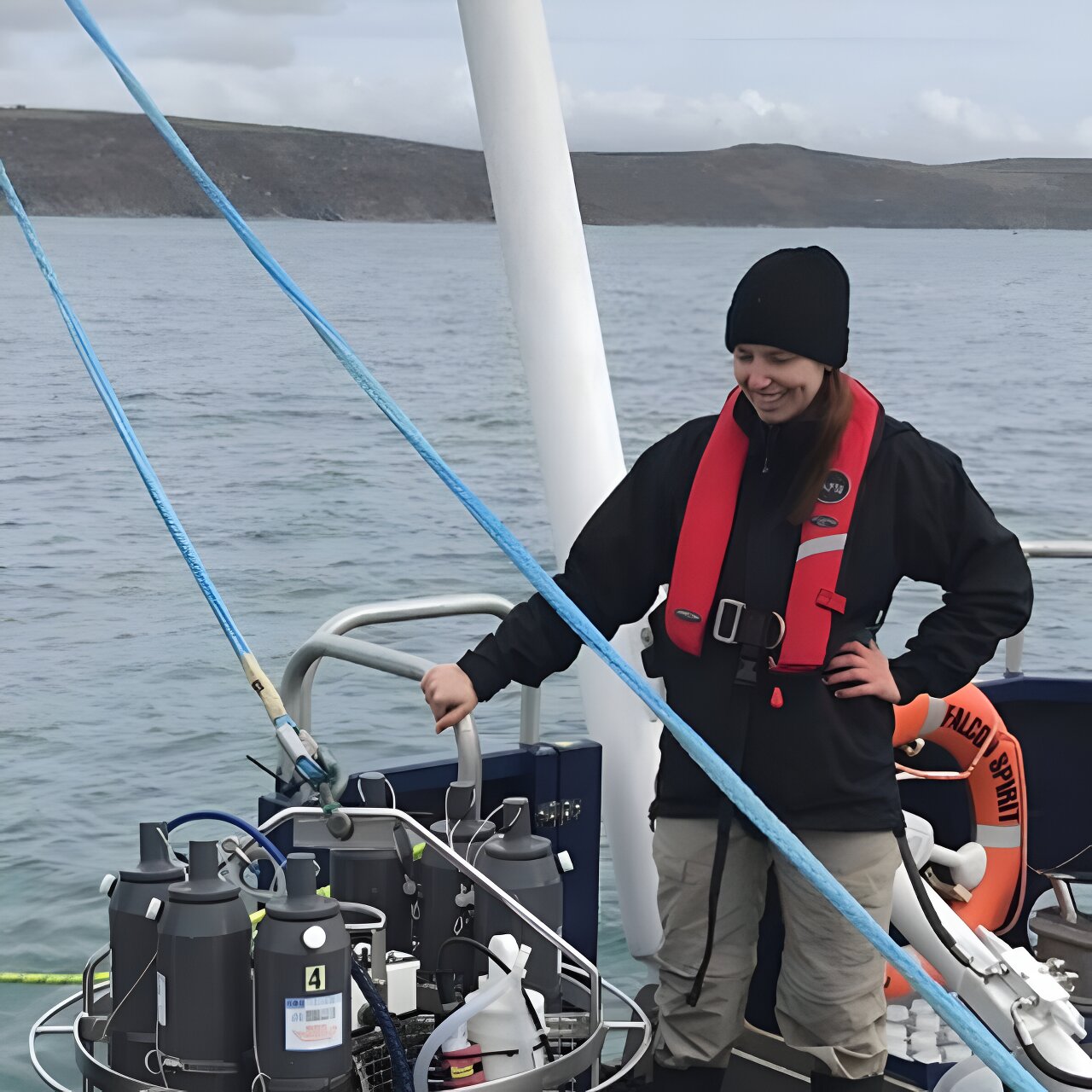In the 1980s, heavy metal pollution had rendered the Elbe estuary ineffective as an estuarine filter. Recent research led by doctoral student Louise Rewrie from the Helmholtz-Zentrum Hereon reveals that after several decades, the estuary has shown signs of recovery based on measurements of carbon and other parameters.
It has only been in recent years that the biogeochemical processes in the Elbe River Estuary have returned to their natural state. The findings of the long-term study conducted by marine science Ph.D. candidate Louise Rewrie from the Helmholtz-Zentrum Hereon were recently published in the journal Limnology and Oceanography.
The study demonstrates that river estuaries can recover from years of pollution given enough time. Rewrie and her team analyzed water samples from the Elbe River over a 33-year period. The data show that it takes several decades for the habitat and its biological and biogeochemical processes to reach a natural level. This highlights the need for long-term environmental protection measures.
Elevated Pollutant Input
The Elbe River was heavily polluted in the mid-1980s, with untreated industrial and household wastewater flowing into the river. This led to high levels of toxic heavy metals entering the Elbe from industrial plants in East Germany and Czechoslovakia. Additionally, large quantities of nutrients from agriculture and wastewater exacerbated the pollution.
Improvements in wastewater treatment plants in the Czech Republic and the new German states after the fall of the Iron Curtain resulted in the recovery of the Elbe estuary between 1991 and 1996. The study shows that significant recovery has occurred since 1997, according to Louise Rewrie.
Rewrie analyzed water samples taken between 1985 and 2018, which were collected during regular helicopter flights conducted by the Elbe River Basin Community. These aerial surveys allow for the sampling of the entire estuary area, providing a snapshot of the pollution situation in a short period of time. Various parameters such as oxygen content and pH value were measured.
Ecosystem State Changes
The researchers discovered that heavy metal levels in the Elbe estuary were initially above the targets set by the “International Commission for the Protection of the Elbe River” (ICPER) for aquatic communities in the mid-1980s. These high levels of heavy metals likely affected the growth of phytoplankton, leading to changes in the ecosystem state.
The data revealed a significant decrease in “dissolved inorganic carbon” (DIC), which includes carbon dioxide and dissolved carbonic acid, indicating a disruption in DIC processing caused by poor thriving of organisms. This ceased processing was observed throughout the estuary except for areas where pollutant levels were more dilute. Dr. Yoana Voynova emphasizes the importance of estuaries as filters for nutrients and maintaining a balanced ecosystem.
The recovery of the Elbe estuary serves as a cautionary tale for human intervention in estuaries. Environmental disasters and increasing droughts should be viewed with concern due to the long regeneration times of these delicate ecosystems. Understanding the natural processes and states of estuaries is crucial for climate research and proper assessment of their influence on carbon dioxide sequestration or release.
The study divided the Elbe estuary into seven sections to analyze different processes that occur in each section. This allows for a more comprehensive understanding of estuarine dynamics.
More information:
Louise C. V. Rewrie et al, Significant shifts in inorganic carbon and ecosystem state in a temperate estuary (1985–2018), Limnology and Oceanography (2023). DOI: 10.1002/lno.12395
Citation:
Significant shifts in inorganic carbon and ecosystem state in a temperate estuary (2023, August 8)
retrieved 8 August 2023
from https://phys.org/news/2023-08-significant-shifts-inorganic-carbon-ecosystem.html
This document is subject to copyright. Apart from any fair dealing for the purpose of private study or research, no
part may be reproduced without the written permission. The content is provided for information purposes only.
Denial of responsibility! TechCodex is an automatic aggregator of the all world’s media. In each content, the hyperlink to the primary source is specified. All trademarks belong to their rightful owners, and all materials to their authors. For any complaint, please reach us at – [email protected]. We will take necessary action within 24 hours.

Jessica Irvine is a tech enthusiast specializing in gadgets. From smart home devices to cutting-edge electronics, Jessica explores the world of consumer tech, offering readers comprehensive reviews, hands-on experiences, and expert insights into the coolest and most innovative gadgets on the market.


